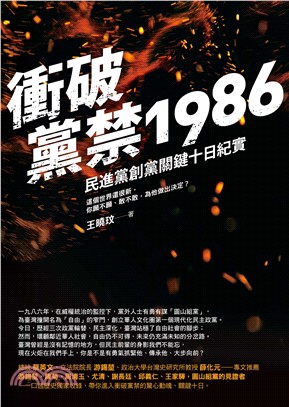Microstructural Characterization Of Materials 2E
商品資訊
ISBN13:9780470027851
出版社:John Wiley & Sons Inc
作者:Brandon
出版日:2008/03/14
裝訂/頁數:平裝/560頁
規格:24.5cm*17cm (高/寬)
定價
:NT$ 4548 元優惠價
:90 折 4093 元
若需訂購本書,請電洽客服 02-25006600[分機130、131]。
商品簡介
目次
商品簡介
Microstructural characterization is usually achieved by allowing some form of probe to interact with a carefully prepared specimen. The most commonly used probes are visible light, X-ray radiation, a high-energy electron beam, or a sharp, flexible needle. These four types of probe form the basis for optical microscopy, X-ray diffraction, electron microscopy, and scanning probe microscopy.
Microstructural Characterization of Materials, 2nd Edition is an introduction to the expertise involved in assessing the microstructure of engineering materials and to the experimental methods used for this purpose. Similar to the first edition, this 2nd edition explores the methodology of materials characterization under the three headings of crystal structure, microstructural morphology, and microanalysis. The principal methods of characterization, including diffraction analysis, optical microscopy, electron microscopy, and chemical microanalytical techniques are treated both qualitatively and quantitatively. An additional chapter has been added to the new edition to cover surface probe microscopy, and there are new sections on digital image recording and analysis, orientation imaging microscopy, focused ion-beam instruments, atom-probe microscopy, and 3-D image reconstruction. As well as being fully updated, this second edition also includes revised and expanded examples and exercises, with a solutions manual available at http://develop.wiley.co.uk/microstructural2e/
Microstructural Characterization of Materials, 2nd Edition will appeal to senior undergraduate and graduate students of material science, materials engineering, and materials chemistry, as well as to qualified engineers and more advanced researchers, who�will find the book a useful and comprehensive general reference source.
Microstructural Characterization of Materials, 2nd Edition is an introduction to the expertise involved in assessing the microstructure of engineering materials and to the experimental methods used for this purpose. Similar to the first edition, this 2nd edition explores the methodology of materials characterization under the three headings of crystal structure, microstructural morphology, and microanalysis. The principal methods of characterization, including diffraction analysis, optical microscopy, electron microscopy, and chemical microanalytical techniques are treated both qualitatively and quantitatively. An additional chapter has been added to the new edition to cover surface probe microscopy, and there are new sections on digital image recording and analysis, orientation imaging microscopy, focused ion-beam instruments, atom-probe microscopy, and 3-D image reconstruction. As well as being fully updated, this second edition also includes revised and expanded examples and exercises, with a solutions manual available at http://develop.wiley.co.uk/microstructural2e/
Microstructural Characterization of Materials, 2nd Edition will appeal to senior undergraduate and graduate students of material science, materials engineering, and materials chemistry, as well as to qualified engineers and more advanced researchers, who�will find the book a useful and comprehensive general reference source.
目次
Preface to the Second Edition.
Preface to the First Edition.
1. The Concept of Microstructure.
1.1. Microstructural Features.
1.2. Crystallography and Crystal Structure.
2. Diffraction Analysis of Crystal Structure.
2.1. Scattering of Radiation by Crystals.
2.2. Reciprocal Space.
2.3. X-ray Diffraction Methods.
2.4. Diffraction Analysis.
2.5. Electron Diffraction.
3. Optical Microscopy.
3.1. Geometrical Optics.
3.2. Construction of the Microscope.
3.3. Specimen Preparation.
3.4. Image contrast.
3.5. Working with Digital Images.
3.6. Resolution, contrast and Image Interpretation.
4. Transmission Electron Microscopy.
4.1. Basic Principles.
4.2. Specimen Preparation.
4.3. The Origin of Contrast.
4.4. Kinematic Interpretation of Diffraction Contrast.
4.5. Dynamic Diffraction and Absorption effects.
4.6. Lattice Imaging at High Resolution.
4.7. Scanning Transmission Electron Microscopy.
5. Scanning Electron Microscopy.
5.1. Components of The Scanning electron Microscope.
5.2. Electron Beam-Specimen Interactions.
5.3. Electron Excitation of X-Rays.
5.4. Backscattered Electrons.
5.5. Secondary Electron Emission.
5.6. Alternative Imaging Modes.
5.7. Specimen Preparation and Topology.
5.8. Focused Ion Beam Microscopy.
6. Microanalysis in Electron Microscopy.
6.1. X-Ray Microanalysis.
6.2. Electron Energy Loss Spectroscopy.
7. Scanning Probe Microscopy and Related Techniques.
7.1. Surface Forces and Surface Morphology.
7.2. Scanning Probe Microscopes.
7.3. Field-Ion Microscopy and Atom Probe tomography.
8. Chemical Analysis of Surface Composition.
8.1. X-ray Photoelectron Spectroscopy.
8.2. Auger Electron Spectroscopy.
8.3. Secondary-Ion Mass Spectrometry.
9. Quantitative and Tomographic Analysis of Microstructure.
9.1. Basic Stereological Concepts.
9.2. Accessible and Inaccessible Parameters.
9.3. Optimizing Accuracy.
9.4. Automated Image Analysis.
9.5. Tomography and Three-Dimensional Reconstruction.
Appendices.
Index.
Preface to the First Edition.
1. The Concept of Microstructure.
1.1. Microstructural Features.
1.2. Crystallography and Crystal Structure.
2. Diffraction Analysis of Crystal Structure.
2.1. Scattering of Radiation by Crystals.
2.2. Reciprocal Space.
2.3. X-ray Diffraction Methods.
2.4. Diffraction Analysis.
2.5. Electron Diffraction.
3. Optical Microscopy.
3.1. Geometrical Optics.
3.2. Construction of the Microscope.
3.3. Specimen Preparation.
3.4. Image contrast.
3.5. Working with Digital Images.
3.6. Resolution, contrast and Image Interpretation.
4. Transmission Electron Microscopy.
4.1. Basic Principles.
4.2. Specimen Preparation.
4.3. The Origin of Contrast.
4.4. Kinematic Interpretation of Diffraction Contrast.
4.5. Dynamic Diffraction and Absorption effects.
4.6. Lattice Imaging at High Resolution.
4.7. Scanning Transmission Electron Microscopy.
5. Scanning Electron Microscopy.
5.1. Components of The Scanning electron Microscope.
5.2. Electron Beam-Specimen Interactions.
5.3. Electron Excitation of X-Rays.
5.4. Backscattered Electrons.
5.5. Secondary Electron Emission.
5.6. Alternative Imaging Modes.
5.7. Specimen Preparation and Topology.
5.8. Focused Ion Beam Microscopy.
6. Microanalysis in Electron Microscopy.
6.1. X-Ray Microanalysis.
6.2. Electron Energy Loss Spectroscopy.
7. Scanning Probe Microscopy and Related Techniques.
7.1. Surface Forces and Surface Morphology.
7.2. Scanning Probe Microscopes.
7.3. Field-Ion Microscopy and Atom Probe tomography.
8. Chemical Analysis of Surface Composition.
8.1. X-ray Photoelectron Spectroscopy.
8.2. Auger Electron Spectroscopy.
8.3. Secondary-Ion Mass Spectrometry.
9. Quantitative and Tomographic Analysis of Microstructure.
9.1. Basic Stereological Concepts.
9.2. Accessible and Inaccessible Parameters.
9.3. Optimizing Accuracy.
9.4. Automated Image Analysis.
9.5. Tomography and Three-Dimensional Reconstruction.
Appendices.
Index.
主題書展
更多
主題書展
更多書展今日66折
您曾經瀏覽過的商品
購物須知
外文書商品之書封,為出版社提供之樣本。實際出貨商品,以出版社所提供之現有版本為主。部份書籍,因出版社供應狀況特殊,匯率將依實際狀況做調整。
無庫存之商品,在您完成訂單程序之後,將以空運的方式為你下單調貨。為了縮短等待的時間,建議您將外文書與其他商品分開下單,以獲得最快的取貨速度,平均調貨時間為1~2個月。
為了保護您的權益,「三民網路書店」提供會員七日商品鑑賞期(收到商品為起始日)。
若要辦理退貨,請在商品鑑賞期內寄回,且商品必須是全新狀態與完整包裝(商品、附件、發票、隨貨贈品等)否則恕不接受退貨。
































